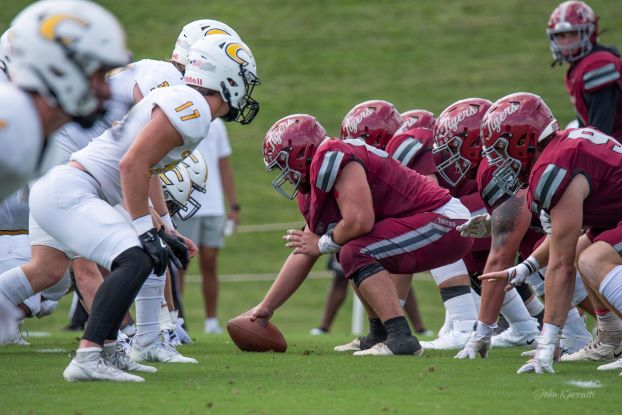Happy to be here — Observing with both eyes
Published 3:51 pm Thursday, November 3, 2022
|
Getting your Trinity Audio player ready...
|
A friend recently asked me about buying an inexpensive, fun telescope suitable for taking a first step into the hobby of backyard astronomy. It’s a question I receive frequently when people discover that my husband and I have been involved in stargazing for decades. As the holiday shopping season approaches, I expect to hear the question again. My friend suggested that I offer my answer here.
Two items that have a significant impact on the quality, usability, and price of a telescope are the optics (lenses, mirrors, eyepieces) and the mount (often a tripod). Inexpensive telescopes typically keep their costs low by cutting corners in one or both of these areas. It may seem obvious that good optics are vital, but the mount is also especially important. Even if you have great optics, you can’t enjoy seeing anything unless the telescope is stable. Because telescopes greatly magnify what you’re looking at, all vibrations are also magnified. Unless the telescope is on something that holds it secure, you’ll just see jiggling spots.
Telescope magnifications also mean that you see only a tiny piece of the sky through the eyepiece, and the view will contain many objects that you can’t see with your unaided eye. This combination of factors makes it difficult for unpracticed hands to point a telescope at the intended object. To complicate matters further, because telescopes use mirrors to focus light, what you see through the eyepiece will be oriented differently from its appearance to your eye. Based on the type of telescope and its specifications, the image you see may be inverted (top to bottom), reversed (left to right), or inverted and reversed.
Trending
For these reasons, I recommend that people consider binoculars instead of a telescope for a first step into backyard astronomy. Even though my husband and I now have a couple different telescopes, I still actually prefer my binoculars. Binoculars give you a wider field of view, and they don’t use mirrors that invert or reverse the image. This makes it a lot easier to learn to navigate the sky, a task that requires a learning curve. Even when you first look up through binoculars, you’ll be surprised at how much more you can see than with your unaided eye. Binoculars are also easily portable, and I find it more comfortable to look with both of my eyes.
There are many kinds of binoculars in many price ranges. They come in “sizes” that include numbers such as 7×35, 8×42, 9×63, 15×70. The first number is the magnification power; the second number is the diameter in millimeters of the objective lens (the big lens opposite the eyepiece). For astronomy, the larger the objective lens, the more light the binoculars will gather and the more you’ll see. I suggest 35 as the bare minimum for astronomy. The trade off is that the larger the lens, the heavier the binoculars. Heavier binoculars are harder to hold steady. Just as with a telescope, every little jiggle will be magnified.
My personal binoculars, which I absolutely love, are 9×63. I use them mounted on a tripod because they’re too heavy for me to hold steady. As a bonus, having them on a tripod allows me to step away from the eyepiece and share what I’m seeing with others. Mounting binoculars on a tripod, however, requires a sturdy tripod (and often an adapter to secure the binoculars to the tripod). A good tripod and adapter can cost as much as the binoculars.
If you’ve already got a pair of binoculars and a comfy chair, try this before you buy anything: Go outside at night and see what you can see. Download a current sky map for the northern hemisphere from Skymaps.com (it’s free). The sky map depicts the current positions of the stars and planets and it lists things to see with the unaided eye, things to see with binoculars, and things that require a telescope. Learn your way around the sky and discover what you like best to view. Then, you’ll be in a better position to evaluate the pros and cons of bigger binoculars and the pros and cons of various types of telescopes.
Happy observing!
Karen Bellenir has been writing for The Farmville Herald since 2009. Her book, Happy to Be Here: A Transplant Takes Root in Farmville, Virginia features a compilation of her columns. It is available from PierPress.com. You can contact Karen at kbellenir@PierPress.com.





